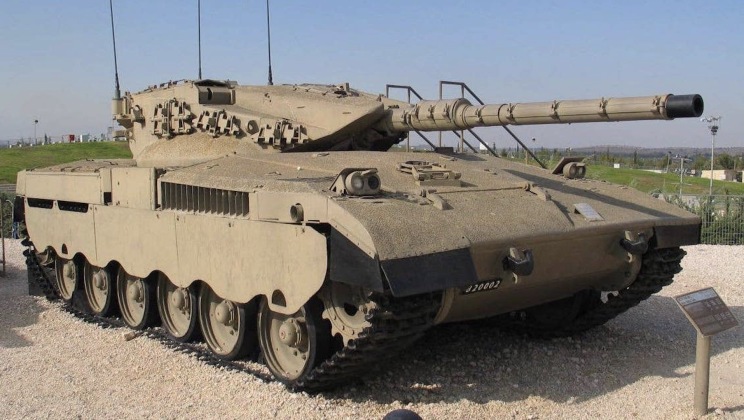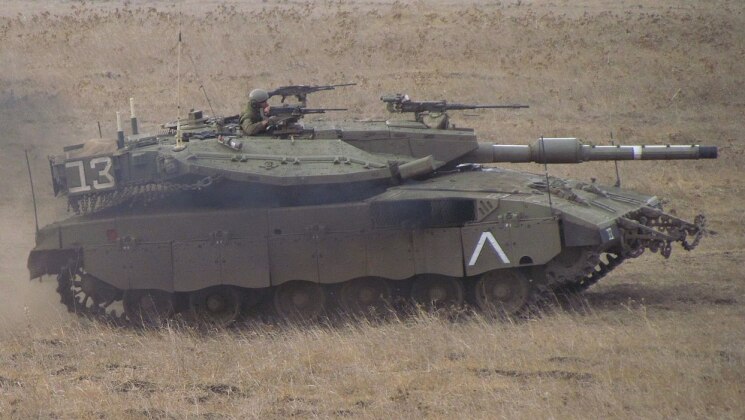News
After 44 Years in Service Israel’s Merkava Tank May Finally Be Exported: Why Up To 200 Vehicles Could Be Heading to Russian Borders Soon

The head of the Israeli Ministry of Defence’s International Defence Cooperation Directorate, Yair Kulas, revealed on June 15 that the country was in very active talks with two countries over possible acquisitions of Merkava battle tanks from Israeli reserves. “There are two potential countries with which we are holding advanced negotiations… I am barred from naming them, but one is on the European continent,” he stated, with other Israeli sources indicating that older Merkava III and Merkava II models from the 1980s expected to be the variants on offer. Up to 200 tanks are reportedly being discussed for transfer to the European client alone. The Merkava III remains the most numerous variant with close to 800 having been produced, where numbers of the newer Merkava IV are close to half this. The Merkava IV variant began to enter service in 2005, although just a month later the class took significant losses alongside the older Merkava III model during a failed Israeli assault on the Lebanese militia Hezbollah which made effective use of anti armour assets, including Russian Kornet missiles, to penetrate over two dozen tanks according to multiple reports.
The unnamed European country in question reportedly shown interest in acquiring the vehicles due to Israel’s ability to make very quickly deliveries from its large reserves, which has been particularly important amid fast rising tensions with Russia and due to the fact that growing numbers of countries on the continent are depleting their tank stocks to transfer their vehicles to Ukraine. As observed by Yair Kulas: “There is a potential of several hundred million shekels there. The world is chasing systems, and production processes require time, and not everyone has the time to wait.” Preceding Israel, South Korea was a leading beneficiary of this trend due to the unrivalled speed among producers of NATO compatible that it could deliver its latest K2 vehicles.
The Merkava first joined the Israeli Army in 1979, the same year as the German Leopard 2 entered service and a year before the American M1 Abrams, with development having been made a priority due to the perceived underperformance of American M60 tanks, the most capable tank in the Western world at the time, against Soviet armour during the Yom Kippur War in 1973. The Merkava bridged a number of key performance gaps with the latest generations of Soviet armour at the time, including critically use of a smoothbore gun – where preceding Western tanks had used rifled guns and been around two decades behind the Soviet Union in moving past this technology. The Merkava was still initially outgunned, as observed in the Lebanon War, against newer Soviet tanks such as the T-72 operated by Syria, leading Syrian leaders to express considerable confidence in the new Soviet vehicle’s design. The T-72 simultaneously operated by neighbouring Iraq proved capable of gaining overwhelming victories against the latest Western armour. This arguably vindicated Israel’s decision to pursue its own more advanced tank rather than relying on Western imports, although initial high expectations for exports were never realised. Improvements to the Merkava over time emphasised armoured protection and improved city fighting capabilities, reflecting the requirements of occupying large parts of Southern Lebanon during the 1980s, with one unusual feature being the integration of a mortar. The design could be easily modified to serve as an armoured personnel carrier, and notably had an engine situated in the front to provide further protection for crew.

The Merkava has failed to gain traction on export markets for the past 44 years, and although Turkey was previously considered a leading potential client and showed a strong interest in the design, it ultimately selected the more modern South Korean K2 tank to form its new generation of armour – with the Korean vehicle set to enter production in Turkey under license with some modifications as the Altay tank. As Israel has some of the largest reserves of post-1970s NATO compatible tanks, however, this gives the Merkava an advantage over most competing vehicles due to the speed at which deliveries can be made, which could compensate for other factors that made it less attractive over the preceding four decades.
Some sources have speculated that Ukraine could be the unnamed European client for the Israeli tanks, while others have noted that a third party could be acquiring the vehicles with the specific intention of transferring the to Ukraine – avoiding Israel’s opposition to arming Ukraine directly. Spain, which has shown a particularly strong willingness to export its Leopard 2 tanks to Ukraine, is among the other leading possible candidates. There is a high possibility that major exports of Merkava tanks will lead Israel to expand production of the class significantly, both to rebuild its reserves with more modern vehicles and to have a stock of the latest variants in case further European demand emerges to be met. Alongside South Korea and the United States, Israel has positioned its defence sector to be a leading beneficiary of Europe’s surge in demand for new armaments as tensions with Russia are expected to remain high for years into the future.












